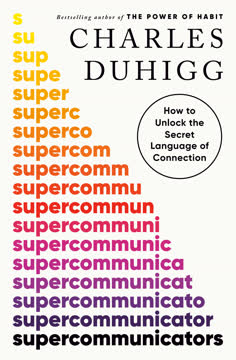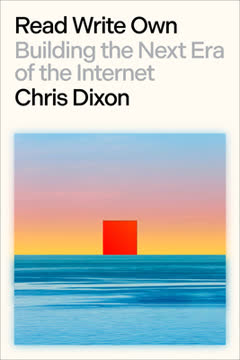つの重要なポイント
1. 予期せぬつながりと製造プロセスを通じて創造性を解き放つ
「私はよく、創造的であることは単に周囲に気づき、これらの衝動を特定の媒体に翻訳することだと言います。」
創造性はスキルです。 それは練習と観察を通じて学び、育むことができます。シェフのグラント・アチャッツのような最も創造的な個人は、音楽を聴くことから自然を観察することまで、思いがけないところからインスピレーションを得ます。彼らは一見無関係な概念を結びつけることで、レオナルド・ダ・ヴィンチが「未接続のものを接続する」と呼んだ技術を使います。
創造性を製造する。 インスピレーションが湧くのを待つのではなく、アイデアを一貫して生み出すプロセスを作りましょう。アチャッツは「フレーバーバウンシング」と呼ばれる技術を使って新しい料理を作り、脚本家のアーロン・ソーキンは物語を構築するための構造化されたアプローチを採用しています。アイデア生成のためのシステムを確立することで、特にインスピレーションを感じていないときでも創造的な仕事を生み出すことができます。
- 予期せぬ場所からインスピレーションを探す
- 一貫したアイデア生成のプロセスを作る
- 無関係な概念を結びつける練習をする
- 創造的プロセスの一部として失敗を受け入れる
2. 不快感を受け入れ、痛みを擬人化することで精神的な強さを築く
「痛みは心の中に秘密の扉を開き、それはピークパフォーマンスと美しい静寂の両方に通じる。」
不快感を受け入れる。 精神的な強さは意図的に挑戦的な経験を求めることで築かれます。「最もタフな男」として知られるデビッド・ゴギンズは、自分の限界を超えることを定期的に推奨しています。これには冷水シャワーを浴びること、激しい運動をすること、難しい精神的な課題に取り組むことが含まれます。
痛みを擬人化する。 ウルトラ耐久アスリートのアメリア・ブーンやコートニー・ドゥウォルターは、痛みや不快感を再構築する技術を習得しています。痛みを敵としてではなく、友人やガイドとして見ることで、非常に挑戦的な状況でも耐え、さらには繁栄することができます。
- 快適ゾーンから外れる活動に定期的に取り組む
- 「製造された困難」の実践を開発する
- 痛みや不快感を成長のためのツールとして再構築する
- 挑戦に対して精神的に準備するための視覚化技術を使用する
3. 信頼、効果的なコミュニケーション、継続的な改善で健全な関係を育む
「私たちの関係の質が、私たちの人生の質を決定する。」
一貫して信頼を築く。 信頼は、個人的な関係でも職業的な関係でも、すべての健全な関係の基盤です。LinkedInの創設者リード・ホフマンの公式によれば、信頼は一貫性と時間によって築かれます。信頼性を持ち、約束を守ることに焦点を当てましょう。
コミュニケーションをマスターする。 効果的なコミュニケーションは、単に話すこと以上のものを含みます。それは積極的な傾聴と共感を必要とします。元FBI交渉人のクリス・ヴォスは、感情を反映し、ラベル付けすることの重要性を強調しています。個人的な関係では、心理学者のジョン・ゴットマンは、ポジティブな相互作用とネガティブな相互作用の比率を5対1に保つことを提案しています。
- すべての会話で積極的な傾聴と共感を実践する
- パートナーの「つながりのための呼びかけ」に応答する
- 紛争解決と修復のための戦略を開発する
- 関係スキルの継続的な改善に取り組む
4. 対立、意図、日常の中の非凡さに焦点を当ててストーリーテリングをマスターする
「素晴らしい物語は、それを語ることができる人に起こる。」
対立と意図に焦点を当てる。 脚本家のアーロン・ソーキンは、魅力的な物語は何かを望むキャラクターとそれを達成するための障害に焦点を当てると強調しています。キャラクターの欲望と直面する挑戦を明確に定義することで、観客を引き込む物語を作り出すことができます。
日常の中の非凡さを見つける。 ジャーナリストのゲイ・タリーズや写真家のブランドン・スタントン(Humans of New York)は、日常の状況の中で魅力的な物語を発見することでキャリアを築いてきました。周囲の世界に対する好奇心を育み、隠れた物語を発見するための質問を投げかけましょう。
- キャラクターの欲望と直面する障害を定義する
- 「しかし」、「例外」、「そしてその後」のテストを使用して対立を導入する
- 日常の状況で興味深い角度を見つける練習をする
- 魅力的な物語を発見するためのインタビュー技術を開発する
5. ピラミッドを逆転させ、成功のためのシステムを作ることで効果的にリードする
「ピラミッドを逆転させ、自分を底にいる人として想像するべきです。あなたはすべての仕事を可能にするためにそこにいるのです。」
リーダーシップのピラミッドを逆転させる。 Spotifyの創設者ダニエル・エクやレストラン経営者のダニー・メイヤーは、ボトムアップのリーダーシップアプローチを推奨しています。自分をトップにいるのではなく、チームの仕事を支援し、可能にするために底にいると想像しましょう。このアプローチは革新を促進し、従業員が自分のアイデアに対して責任を持つことを可能にします。
成功のためのシステムを作る。 Shopifyの創設者トビ・ルッケは、結果ではなくシステムに焦点を当てることの重要性を強調しています。堅牢なプロセスとフレームワークを作ることで、一貫した結果を確保し、チームが独立して意思決定を行うことを可能にします。
- リソースとサポートを提供してチームを支援する
- 組織のすべてのレベルからのアイデアと革新を奨励する
- 一貫した成功を可能にするシステムとプロセスを開発する
- システムを定期的に評価し、改善する
6. コンピテンスを築き、不確実性を受け入れることで計算されたリスクを取る
「恐怖は準備不足の症状に過ぎません。恐怖に対する最良の解毒剤はコンピテンスです。」
練習を通じてコンピテンスを築く。 宇宙飛行士のクリス・ハドフィールドは、コンピテンスが恐怖に対する究極の解毒剤であると強調しています。スキルを一貫して練習し、向上させることで、挑戦に対処し、計算されたリスクを取るための準備が整います。
不確実性を受け入れる。 徹底的な準備をしても、結果は保証されません。成功したリスクテイカーはこれを理解し、潜在的なデメリットを軽減する戦略を開発しながら、機会に対してオープンであり続けます。
- スキルを定期的に練習し、洗練させる
- 最悪のシナリオを含むさまざまなシナリオに備える
- 「怖い」と「危険」を区別する
- 取り消し可能な決定を迅速に行い、取り消し不可能な決定を慎重に行う
7. 知的謙虚さを持ち、盲信を拒絶することで思考を明確にする
「すべての物語には三つの側面があります:あなたの側、私の側、そして真実。」
知的謙虚さを育む。 自分の信念が間違っているか不完全である可能性を認識しましょう。ジュリア・ガレフは、「スカウトマインドセット」を採用することを提唱しています。これは、防御的ではなく好奇心とオープンさを持ってアイデアにアプローチすることです。
盲信を拒絶する。 エコーチェンバーやグループシンクに注意しましょう。多様な視点に定期的に触れ、自分の仮定に挑戦することを習慣にしましょう。投資家のチャーリー・マンガーが提案するように、自分の立場に対する最強の反論を理解するよう努めましょう。
- 自分の信念に挑戦する視点を定期的に求める
- 反対の議論をスティールマンする練習をする
- 新しい証拠に基づいて信念を更新するためにベイズルールを使用する
- 自分の仮定を疑問視する習慣を身につける
8. 孤独と戦い、感情的なつながりを形成することでエンゲージドコミュニティを築く
「私たちは成功よりもお互いの痛みにもっとつながります。」
目的を通じて孤独と戦う。 研究によると、慢性的な孤独のサイクルを打破する最も効果的な方法の一つは、自分より大きな目標を追求することです。協力と相互作用を必要とする活動に参加しましょう。
感情的なつながりを形成する。 ブランドン・スタントンのHumans of New Yorkプロジェクトは、コミュニティを形成する上での本物のストーリーテリングの力を示しています。脆弱で共感できる物語を共有することで、観客やコミュニティメンバーの間に連帯感と帰属意識を育むことができます。
- より大きな目的に役立つ活動に参加する
- 本物で脆弱な物語を共有してつながりを育む
- コミュニティ内で意味のある相互作用の機会を作る
- コミュニティメンバーの貢献を定期的に認識し、祝う
9. コンテンツダイエットを最適化してメンタルソフトウェアをアップグレードする
「あなたの頭の中で動いているソフトウェアを書いたのは誰ですか?それが本当にそこにあってほしいと思いますか?」
コンテンツ監査を実施する。 消費する情報を定期的に評価しましょう。高品質なコンテンツで自分を挑戦させていますか、それとも既存の信念を強化するだけですか?デビッド・ブルックスが示唆するように、天才に触れることは意識を拡大する力を持っています。
情報源をキュレーションする。 多様で高品質な情報源を積極的に探しましょう。価値のあるコンテンツをキャプチャし、レビューするためのシステムを作りましょう。例えば、ノート取りアプリを使用したり、個人的な知識管理システムを作成したりすることです。
- 情報源を定期的に評価し、アップグレードする
- 価値のあるコンテンツをキャプチャし、レビューするためのシステムを作る
- 既存の信念に挑戦するコンテンツを探す
- 消費と創造、反省のバランスを取る
10. ラベルを拒絶し、自分に賭けることで隠れた天才を発見する
「まず自分ではないものを排除し、そうすれば自分がいるべき場所にたどり着くでしょう。」
制限的なラベルを拒絶する。 社会はしばしば私たちを箱に入れようとしますが、真の成長はこれらのラベルに挑戦することから来ます。ヘビー級チャンピオンのフランシス・ガヌーのように、自分が状況や他人の期待によって定義されていないことを認識しましょう。
自分に賭ける。 成功した個人は一貫して自分の能力に計算されたリスクを取ります。彼らは失敗が成長の必要な部分であることを理解し、目標を達成するために何度もやり直すことをいといません。
- 社会的なラベルや期待に定期的に挑戦する
- 自分に役立たない行動や信念を特定し、排除する
- 自分の能力に計算されたリスクを取る
- 挫折を成長と学習の機会と見なす
最終更新日:
FAQ
What's "Hidden Genius" about?
- Focus on Success: "Hidden Genius" by Polina Marinova Pompliano explores the secret ways of thinking that power the world's most successful people. It delves into the mental frameworks and strategies that distinguish exceptional individuals.
- People-Focused Learning: The book emphasizes learning from the lives and stories of successful people, rather than idolizing them. It suggests that understanding their journeys can help unlock one's own hidden genius.
- Practical Lessons: Through various profiles and stories, the book provides practical lessons on creativity, mental toughness, relationships, leadership, risk-taking, and more.
- Self-Discovery: Ultimately, the book aims to guide readers in discovering their own hidden genius by learning from the successes and failures of others.
Why should I read "Hidden Genius"?
- Inspiration and Motivation: The book offers inspiring stories of individuals who have achieved great success, providing motivation to pursue one's own goals.
- Practical Advice: It provides actionable insights and strategies that can be applied to personal and professional life to enhance creativity, resilience, and leadership skills.
- Self-Improvement: Readers can learn how to overcome challenges, take calculated risks, and build meaningful relationships, all of which contribute to personal growth.
- Unique Perspective: The book's focus on people-focused learning offers a fresh perspective on how to learn from others' experiences without idolizing them.
What are the key takeaways of "Hidden Genius"?
- Creativity is a Skill: Creativity can be learned and developed through practice and by making connections between seemingly unrelated ideas.
- Mental Toughness: Building mental resilience involves embracing discomfort, facing fears, and developing a strong sense of self-accountability.
- Importance of Relationships: Trust and effective communication are crucial for healthy relationships, both personal and professional.
- Leadership and Risk-Taking: Effective leaders empower others and focus on systems rather than outcomes. Taking calculated risks is essential for growth and innovation.
How does "Hidden Genius" define creativity?
- Skill, Not Talent: Creativity is defined as a skill that can be learned and developed, rather than an innate talent or gift.
- Making Connections: It involves generating fresh ideas by making connections between unrelated subjects and seeing the world through a different lens.
- Practical Methods: The book highlights methods like "flavor bouncing" and "connecting the unconnected" as ways to enhance creative thinking.
- Overcoming Failure: Creativity often involves embracing failure as a stepping stone to success, as seen in the stories of successful individuals like Grant Achatz.
What is the "40% Rule" mentioned in "Hidden Genius"?
- Mental Limitation: The "40% Rule" suggests that when you feel exhausted and think you can't go any further, you're likely only 40% done.
- Pushing Limits: This concept encourages pushing beyond perceived limits to achieve greater endurance and resilience.
- David Goggins' Experience: The rule is exemplified by David Goggins, who used it to overcome physical and mental challenges during his journey to becoming a Navy SEAL.
- Application: It can be applied to various aspects of life, encouraging individuals to push through discomfort and achieve more than they initially thought possible.
How does "Hidden Genius" suggest building trust in relationships?
- Consistency and Time: Trust is built through consistent actions over time, leading to a seamless web of deserved trust.
- Compound Interest of Trust: Trust compounds like interest, growing stronger with each positive interaction and consistent behavior.
- Formula for Trust: The book presents a formula: Trust = Consistency + Time, emphasizing the importance of reliability and long-term commitment.
- Practical Examples: It provides examples of how trust is built in both personal and professional relationships, highlighting the importance of mutual respect and understanding.
What is the "inverted pyramid" leadership model in "Hidden Genius"?
- Bottom-Up Approach: The inverted pyramid model suggests that leaders should see themselves at the bottom, supporting and empowering their teams.
- Empowering Employees: This approach encourages leaders to provide resources and support, allowing employees to generate ideas and drive innovation.
- Examples of Success: The book cites examples like Daniel Ek of Spotify, who uses this model to foster creativity and innovation within his organization.
- Servant Leadership: It aligns with the concept of servant leadership, where leaders prioritize the needs of their team and facilitate their success.
How does "Hidden Genius" address risk-taking?
- Calculated Risks: The book emphasizes the importance of taking calculated risks, evaluating potential outcomes, and preparing for uncertainty.
- Risk Technicians: Successful individuals are described as "risk technicians" who assess and mitigate risks while pursuing their goals.
- Frameworks for Decision-Making: It provides frameworks for distinguishing between reversible and irreversible decisions, helping readers make informed choices.
- Learning from Failure: The book highlights the value of learning from failures and using them as opportunities for growth and innovation.
What role does storytelling play in "Hidden Genius"?
- Unreliable Narrator: The book discusses the concept of the unreliable narrator, emphasizing the importance of being aware of how we tell our own stories.
- Conflict and Intent: Effective storytelling involves focusing on conflict and intent, showing what characters want and the obstacles they face.
- Empathy and Perspective: It encourages readers to view their stories from different perspectives, enhancing empathy and understanding.
- Practical Applications: Storytelling techniques are presented as tools for personal growth, professional success, and building connections with others.
How does "Hidden Genius" suggest optimizing your content diet?
- Content Audit: Conducting a content audit involves evaluating the information you consume daily and making conscious choices to improve it.
- Quality Over Quantity: The book emphasizes the importance of consuming high-quality content that challenges and expands your thinking.
- Mental Software: It likens the mind to a computer, suggesting regular updates to your "mental software" by seeking out new and diverse ideas.
- Practical Steps: Readers are encouraged to surround themselves with inspiring content, engage in meaningful conversations, and explore new intellectual territories.
What is the "theory of maximum taste" in "Hidden Genius"?
- Upper Limit of Mind: The theory suggests that a person's mind is defined by the best content it habitually consumes and is capable of consuming.
- Exposure to Genius: Regular exposure to high-quality, thought-provoking content can expand one's consciousness and intellectual capacity.
- Avoiding Mediocrity: The book warns against settling for mediocre content, as it can lower the upper limit of one's mind over time.
- Practical Application: Readers are encouraged to seek out challenging and inspiring content to continually elevate their thinking and creativity.
What are the best quotes from "Hidden Genius" and what do they mean?
- "Success is personal." This quote emphasizes that true success is defined by individual values and goals, rather than societal standards.
- "Creativity is just connecting things." It highlights the idea that creativity involves making connections between seemingly unrelated ideas to generate new insights.
- "Trust compounds." This quote underscores the importance of consistency and reliability in building trust over time, both in personal and professional relationships.
- "You are most powerful when you tie your identity to your own name." It encourages readers to build an identity based on their own values and achievements, rather than external labels or affiliations.
レビュー
本書『Hidden Genius』は、主に肯定的な評価を受けており、読者は成功した個人からの感動的なストーリーと実践的なアドバイスの集まりを称賛している。多くの人々は、著者が複雑なアイデアを実行可能な洞察にまとめる能力を高く評価している。本書は、創造性、精神的な強さ、効果的なリーダーシップなどのトピックを扱っている。特に若いプロフェッショナルや自己成長を求める人々にとって有用であると感じる読者も多い。しかし、内容が完全にオリジナルではなく、経験豊富な読者にとっては表面的すぎると批判する声もある。全体として、本書は自分の可能性を引き出すための魅力的でアクセスしやすいガイドとして見られている。
Similar Books














